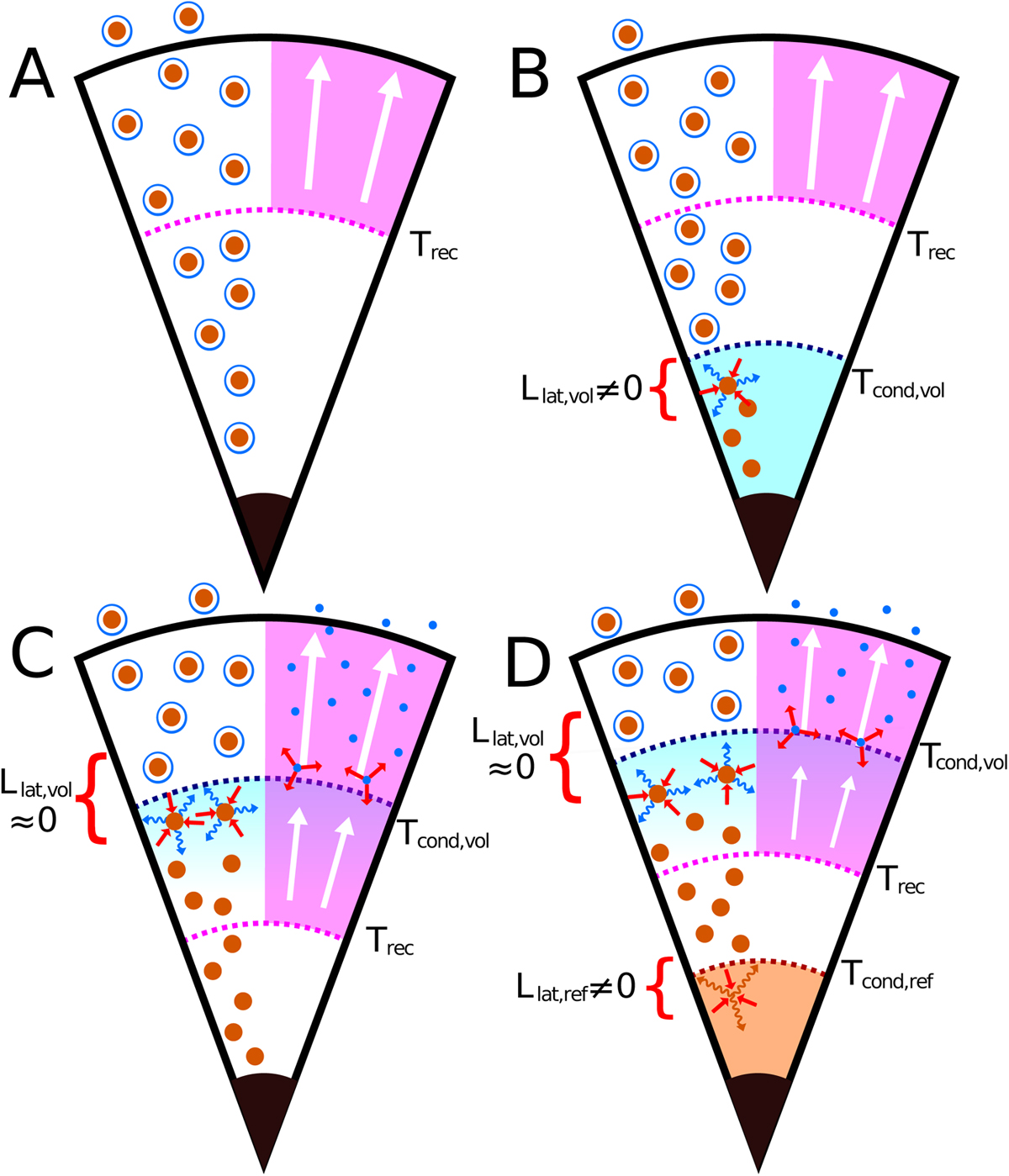Fig. 1

Download original image
Cartoon of the planetary envelope in different scenarios, each featuring one volatile species (in blue) and one refractory species (in brown). The infalling pebbles are shown on the left side of the envelope. Initially, they consist of a refractory core (brown dot) and an icy volatile layer (blue ring). On the right side, we show the recycling flows (in magenta) and the dust grains (blue dots) that they carry away. The envelope temperature increases overall from A to D. A: cold envelope in which the volatile sublimation temperature is not reached. B: the volatile species evaporates in the envelope (indicated by the blue arrows), but the recycling flows do not reach deep enough to prevent the accretion of the volatile. Latent heat is absorbed during the evaporation of the volatile ice (indicated by the red arrows). C: the volatile species evaporates in the envelope and the recycling flows transport the vapor back beyond the volatile evaporation front, where the volatile recondenses onto the dust grains. The dust grains covered in ice are then recycled back into the disk. There is no net latent heat absorption due to the recondensation subsequent to the evaporation. D: same as C, but the envelope is hot enough to vaporize the refractory species, causing the absorption of latent heat in the process. The refractory vapor is not recycled.
Current usage metrics show cumulative count of Article Views (full-text article views including HTML views, PDF and ePub downloads, according to the available data) and Abstracts Views on Vision4Press platform.
Data correspond to usage on the plateform after 2015. The current usage metrics is available 48-96 hours after online publication and is updated daily on week days.
Initial download of the metrics may take a while.


